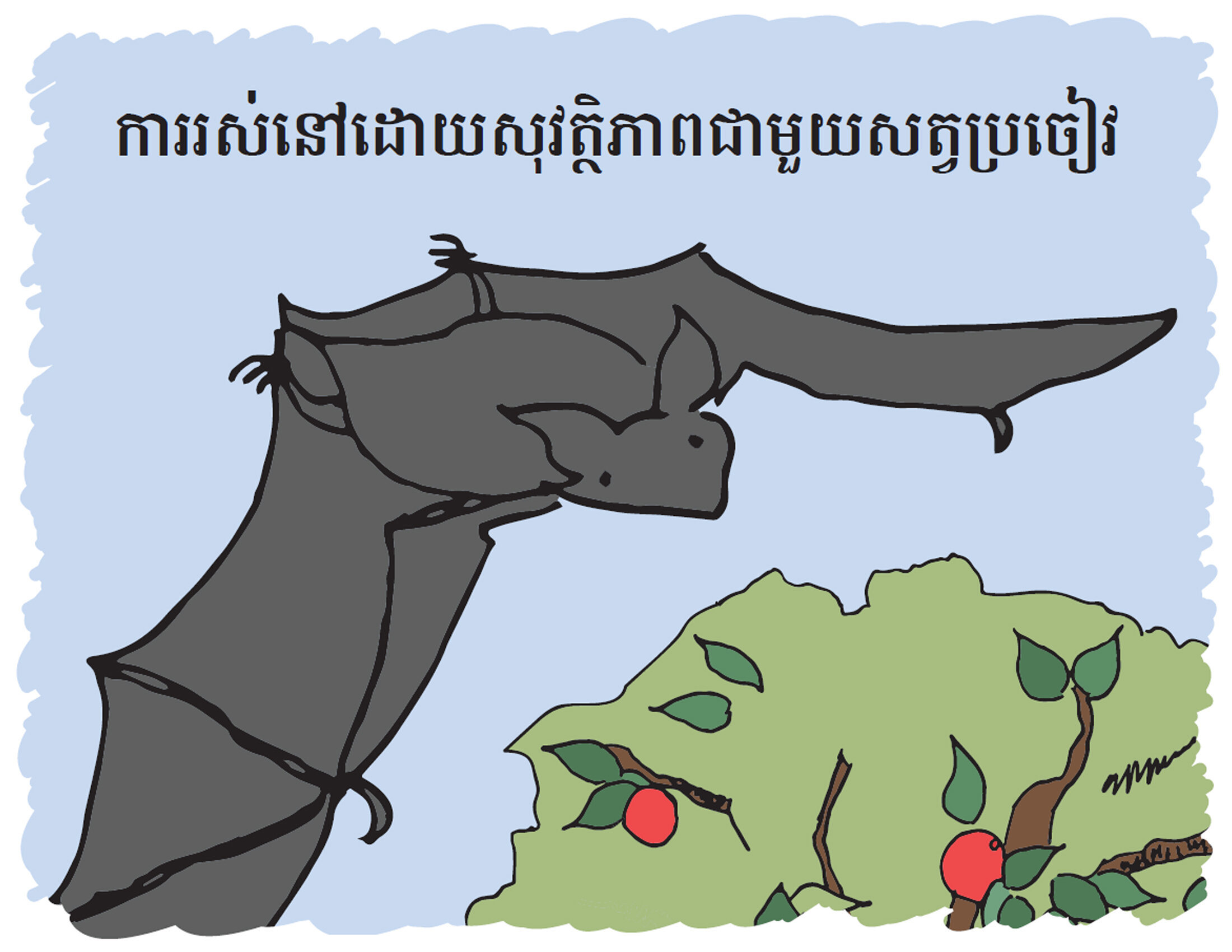PHOTOS: PREDICT teams presenting Living Safely with Bats to community members
PREDICT teams working with the Ebola Host Project in West Africa identified a need to provide behavior change strategies as they relate to Ebola and living safely with bats following the discovery of a new ebolavirus in bats in Sierra Leone. In response, PREDICT worked closely with USAID and local partners to swiftly develop a communications plan and a behavior change intervention resource to help raise awareness among community members about ways to reduce disease risks associated with human-to-bat contact.
To identify the most culturally appropriate, feasible, and effective intervention resource format, PREDICT developed a framework for assessing potential materials, channels of communications, respective audiences, and core messaging. A moderated picture book format, delivered by a trusted community leader, was selected as the best tool to put into the hands of our local team and in-country stakeholders. A communications plan was developed to ensure a well-coordinated effort and timely discussions with government and community stakeholders, following the release of the new ebolavirus finding.
This new resource, Living Safely with Bats, leveraged the subject matter expertise of PREDICT’s interdisciplinary One Health team who contributed technical content. All illustrations were developed by a team member trained in animal biology and visual arts to ensure accurate, consistent, and compelling visual representations throughout the book.
Living Safely with Bats
This new resource, Living Safely with Bats, leveraged the subject matter expertise of PREDICT’s interdisciplinary One Health team who contributed technical content.
Focus groups were also held with PREDICT’s subject matter experts to refine the picture book, and feedback was solicited from project country teams. The book’s content benefited from cultural vetting by 17 country teams (Bangladesh, Cambodia, Cameroon, Cote d’Ivoire, DRC, Ghana, Guinea, Indonesia, Lao PDR, Malaysia, Nepal, ROC, Senegal, Sierra Leone, Tanzania, Thailand, and Vietnam).
Illustrations with moderator talking points
The Living Safely with Bats resource was piloted in Sierra Leone and Tanzania (in collaboration with a US Department of Defense, Defense Threat Reduction Agency project also working at the bat-human interface) to garner input on ways to improve both the content and the process of delivery. A comprehensive review of the book was also conducted in Guinea. Representatives from PREDICT’s Behavioral Risk team were present in West Africa to train and support country partners during the launch of this resource, and the picture book was successfully delivered to community partners during community outreach events in Sierra Leone, Guinea, and Liberia starting in July and August 2018 (Figure 10).
PREDICT collaborated with local partners to raise community awareness on ways to reduce disease risks associated with human-to-bat contact.
The book was also adapted to Asian contexts, with modules developed on bat hunting, guano harvesting, and cave-related tourism.


















